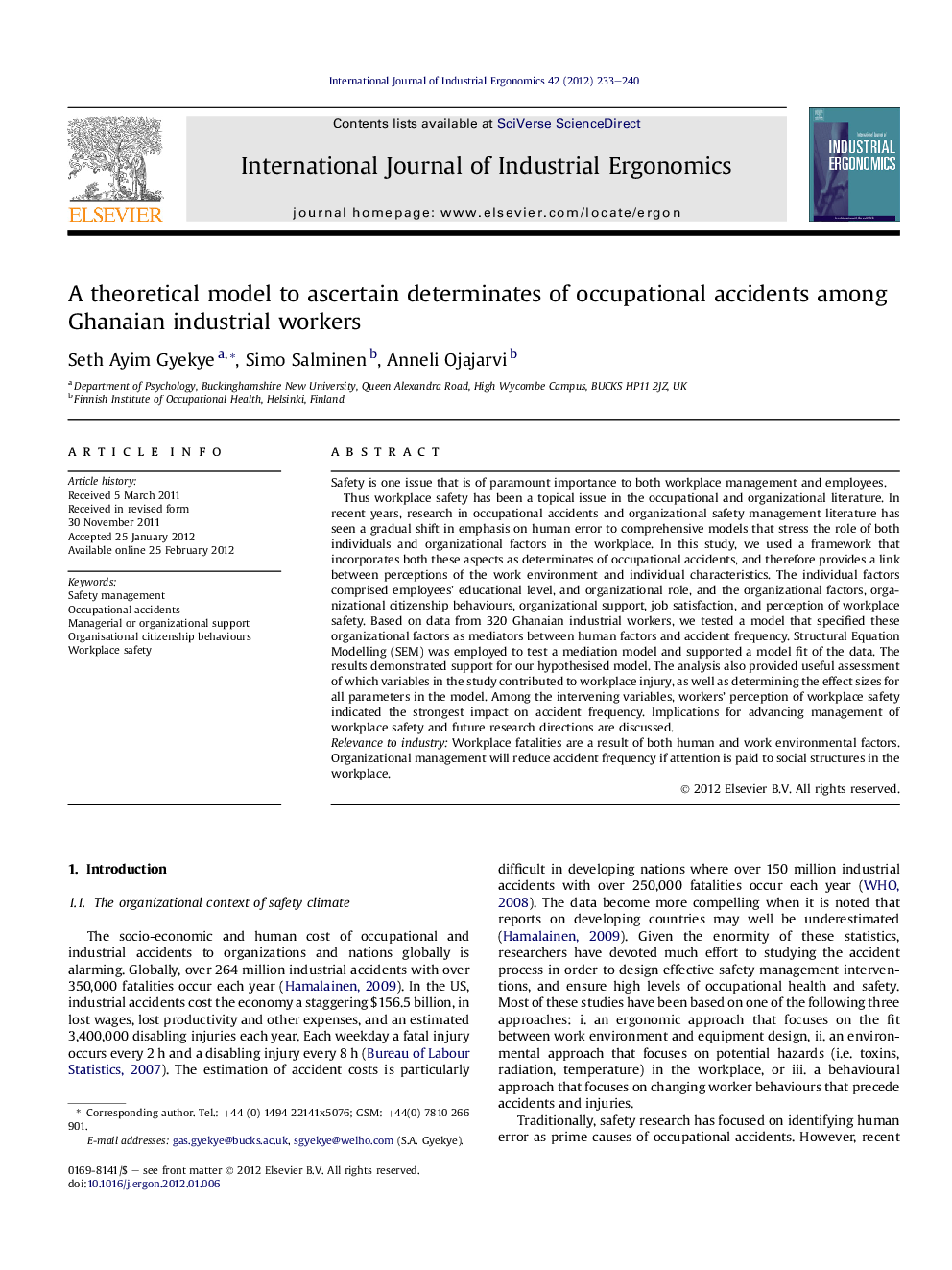| Article ID | Journal | Published Year | Pages | File Type |
|---|---|---|---|---|
| 1096404 | International Journal of Industrial Ergonomics | 2012 | 8 Pages |
Safety is one issue that is of paramount importance to both workplace management and employees.Thus workplace safety has been a topical issue in the occupational and organizational literature. In recent years, research in occupational accidents and organizational safety management literature has seen a gradual shift in emphasis on human error to comprehensive models that stress the role of both individuals and organizational factors in the workplace. In this study, we used a framework that incorporates both these aspects as determinates of occupational accidents, and therefore provides a link between perceptions of the work environment and individual characteristics. The individual factors comprised employees’ educational level, and organizational role, and the organizational factors, organizational citizenship behaviours, organizational support, job satisfaction, and perception of workplace safety. Based on data from 320 Ghanaian industrial workers, we tested a model that specified these organizational factors as mediators between human factors and accident frequency. Structural Equation Modelling (SEM) was employed to test a mediation model and supported a model fit of the data. The results demonstrated support for our hypothesised model. The analysis also provided useful assessment of which variables in the study contributed to workplace injury, as well as determining the effect sizes for all parameters in the model. Among the intervening variables, workers’ perception of workplace safety indicated the strongest impact on accident frequency. Implications for advancing management of workplace safety and future research directions are discussed.Relevance to industryWorkplace fatalities are a result of both human and work environmental factors. Organizational management will reduce accident frequency if attention is paid to social structures in the workplace.
► We developed and tested a model on occupational accidents among Ghanaian industrial workers. ► Model consisted of both individual and organizational factors. ► Human factors and management practices are contributors to occupational accidents. ► Increasing positive safety climate and supportive perceptions will decrease workplace fatality.
